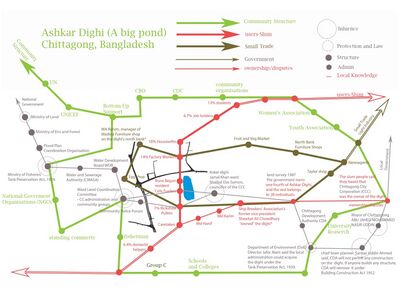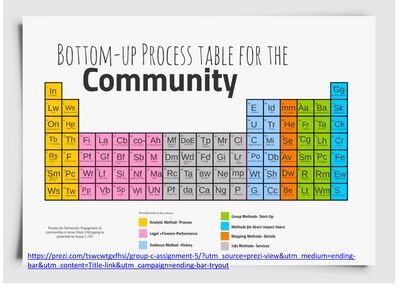LED 2016 Group C Democratic Change Process
Ashkar Dighi is a manmade water body which is considered as a big pond (dighi) located in Chittagong city. The reason of this specific case selection as a landscape democracy project is its historical and social value and in addition to have an ecological value towards city. And its present damaged conditions need deliberate attention. But unfortunately this case does not get proper attention from authority as well as from city dwellers as it can hardly see from road due to the illegal structure around it. This Dighi facing water encroachment, land filling and pollution which ultimately tends to a threat to society and ecosystem. The four banks of this Dighi snatched by slums, furniture shops, religious structures and other structures. Some furniture shop in the north side of the dighi along with the main road accidentally burnt into fire in 2013. Due to this accident the north bank of dighi got openness and managed to get an attention of the concerned citizen and show its huge possibility to become a public spaces. In that time some concern citizen along with professionals (Architect and urban planner) raised their voice and tried to make this space as a public space. Nevertheless, this shops owned by influential locals and they managed to rebuild the shops again and the authority plays a silent role. As the time gradually rolls out, the impact of this issue in human mind unfortunately fades out. Image: LED_ass5_GroupC final-2 copy/background infomation
Power Map
Create a visual representation of the stakeholder groups that are involved in your case. Try to cover the following aspects in your representation: Power (high, medium, low) / Support (positive, neutral, negative)/ Influence (high or low)/ Need (strong, medium, weak)+ also map the relationships between the stakeholder/power groups
- Power Map
Change Process
- Change Process
Concluding reflections
- Reflect on your case and your change model. Potentials? Limitations?
- Which practices or practitioners have framed your work, including a brief narrative of the potential gaps you have filled in our knowledge as designers and planners of participation.(approx. 150 words)

